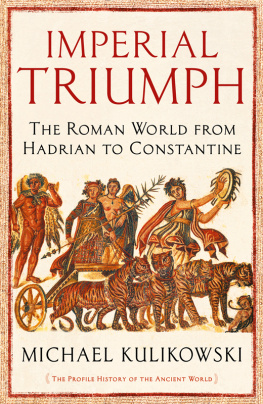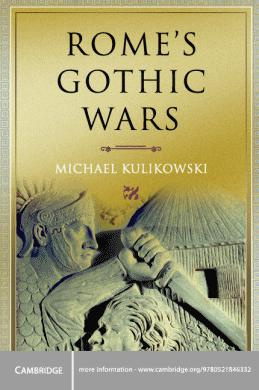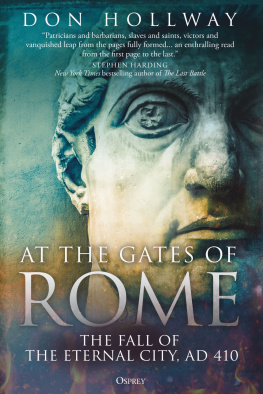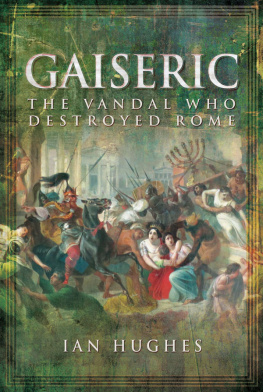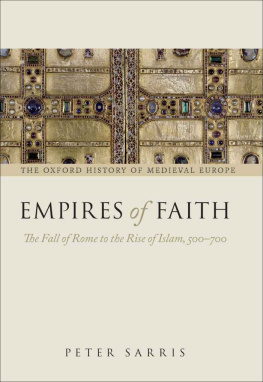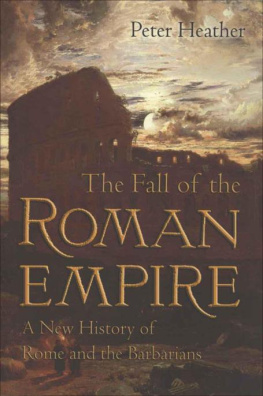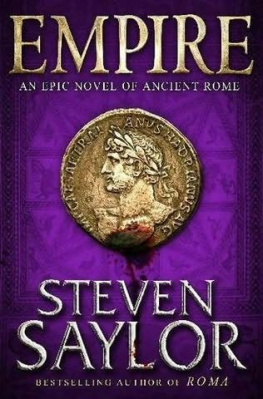IMPERIAL TRAGEDY
ALSO BY MICHAEL KULIKOWSKI
Late Roman Spain and Its Cities
Hispania in Late Antiquity
Romes Gothic Wars: From the Third Century to Alaric
ALSO AVAILABLE IN THE PROFILE HISTORY OF THE ANCIENT WORLD SERIES
The Rise of Rome: From the Iron Age to the Punic Wars 1000264 BC
KATHRYN LOMAS
Age of Conquests: The Greek World from Alexander to Hadrian (336 BCAD 138)
ANGELOS CHANIOTIS
The Origin of Empire: Rome from the Republic to Hadrian (264 BCAD 138)
DAVID POTTER
Imperial Triumph: The Roman World from Hadrian to Constantine AD 138363
MICHAEL KULIKOWSKI
IMPERIAL TRAGEDY
FROM CONSTANTINES EMPIRE TO THE DESTRUCTION OF ROMAN ITALY (AD 363568)
MICHAEL KULIKOWSKI

First published in Great Britain in 2019 by
PROFILE BOOKS LTD
29 Cloth Fair
London EC1A 7JQ
www.profilebooks.com
Copyright Michael Kulikowski, 2019
Cover design: Peter Dyer
Cover image: Demetrio Carrasco / Getty Images
Additional images iStock
The moral right of the author has been asserted.
All rights reserved. Without limiting the rights under copyright reserved above, no part of this publication may be reproduced, stored or introduced into a retrieval system, or transmitted, in any form or by any means (electronic, mechanical, photocopying, recording or otherwise), without the prior written permission of both the copyright owner and the publisher of this book.
A CIP catalogue record for this book is available from the British Library.
ISBN 9781781256329
eISBN 9781782832461
In memoriam
Wiktor Aleksander Kulikowski (19051991)
Tomasz Wilk (19112000)
Isabel Sheila Kulikowski ne Tuckett (19232018)
Anna Wilk ne Sakowicz (19242011)
ACKNOWLEDGEMENTS

That the current world order is in crisis seems, as I write, to have become an article of faith. At all such moments, invocations of Romes decline and fall are de rigueur, their vehemence in inverse proportion to their discernment. Professional historians can be forgiven the urge to contribute: a mistake. Historical analogy requires, by definition, simplification at odds with historical understanding. History neither repeats nor rhymes, and the only thing it should teach us is that, constrained by custom, by psychology, and by our always faulty memories, constrained most of all by circumstance not of our individual making, humans tend to make a mess of making their own fate. I hope I do justice to the mess and the muddle.
The acknowledgements to Imperial Triumph, this books companion and predecessor, were very extensive. I remain deeply grateful to all the many people I thanked there, most of all to David and Ellen. (And, though not a person, to Melvin.)
As she steps down after almost three decades as dean of my college, Susan Welch requires a special note of thanks: watching her has taught me more about the workings of complex institutions and the meaning of leadership than any formal tuition could have done. Thanks to her support and mentoring, I have been able to continue with research and writing while also serving as head of department, something that, unfashionably, I will admit to enjoying.
The production teams at Profile and Harvard have, as always, been models of skill and efficiency, particularly my editors, Louisa Dunnigan and Penny Daniel, copyeditor Sally Holloway, and Sharmila Sen and Heather Hughes at Harvard. I deeply regret that John Davey, who commissioned this book and whose incisive but capacious vision underpins the Profile History of the Ancient World series, did not live to see its completion. Death and illness have silenced too many teachers and friends in the past three years, but they have left their mark on every page.
Just before this book was finished, the last of my grandparents died. From the Polish-Soviet War to the Blitz, from Siberia to the Anders army and Monte Cassino, from Broxbourne to Perns Buenos Aires, they had survived the great imperial tragedies of the twentieth century. Piecing together their stories from the small stock they let slip or felt able to share, trying as a suburban schoolboy to imagine the unimaginable: long before I was conscious of it, they were helping me to become a historian. Their memory keeps me at it.
LIST OF ILLUSTRATIONS

Cosmographia Scoti, Notitia dignitatum. Photo: Bodleian Libraries, Shelfmark & folio no: MS. Canon. Misc. 378, fol. 122r
Monastic Saints, monastery of Saint Jeremias, Saqqara, now in Coptic Museum, Cairo, Egypt. Photo: B. OKane/Alamy Stock
Mausoleum of Galla Placidia, Ravenna. Photo: Lanmas/Alamy Stock Photo
Ivory diptych of Consul Anicius Petronius Probus depicting Emperor Honorius, 406, Aosta Cathedral, Italy. Photo: De Agostini Picture Library/Bridgeman Images
The Emperor Triumphant, known as the Barberini Ivory, Louvre, Paris, France. Photo: Bridgeman Images
Mosaic of Ambrose of Milan, church of San Vitale in Ravenna, Italy. Photo:/Contributor/Getty
The Anthemian Wall of Constantinople. Photo: Chris Hellier/Alamy Stock Photo
Intaglio of Alaric II. Photo: KHM-Museumsverband
Eagle Brooch from the Domagnano Treasure. Photo: akg-images/ullstein bild
Christ Pantocrator from St Catherines Monastery, Sinai. Photo: Zev Radovan/Bridgeman Images
(Top) The City of Jerusalem and the surrounding area, detail from the Madaba mosaic map, Church of Saint Gaorge, Madaba, Jordan. Photo: Bridgeman Images. (Bottom) Photo: Library of Congress
The Missorium of Theodosius. Photo: Juan Aunion/Alamy Stock Photo
Honorius Cameo, depicting Emperor Honorius (395423) and his wife, Maria (ivory and metal). Photo: Private Collection/Bridgeman Images
Throne of Maximianus, Mainz Romano-Germanic Central Museum. Photo: akg-images
Dido making a sacrifice, from The Vergilius Vaticanus (Lat 3225 f.33v). Photo: Vatican Library, Vatican City/Bridgeman Images
Sarcophagus of Junius Bassus. Photo: De Agostini Picture Library/G. Cigolini/Bridgeman Images
The Istanbul Evangelist. Photo: De Agostini Picture Library/Bridgeman Images
An Alkhan Hun. Photo: Public domain
Tessera of Basilius. Photo: Public domain
The Taq-e Kesra, Ctesiphon. Photo: Library of Congress
The Castulo Paten. Photo: Wikipedia
Szilgysomly Medallion. Photo: KHM-Museumsverband
Bracteate from Funen. Photo: KHM-Museumsverband
So Cucufate, Portugal. Photo: Wikipedia
The Corbridge Lanx. Photo: with permission of the Trustees of the British Museum
While every effort has been made to contact copyright-holders of illustrations, the author and publishers would be grateful for information about any illustrations where they have been unable to trace them, and would be glad to make amendments in further editions.
Maps
The Roman Empire under Constantine
The Roman Empire, c. 400
The Roman Empire, c. 550
The Eurasian World
The Sasanian Empire
Gaul and Spain
North Africa
Italy
The Danubian Provinces
Asia Minor
Next page

